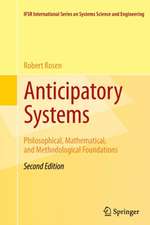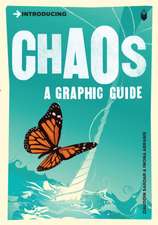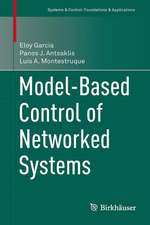Control, Information, and Technological Change: Economics of Science, Technology and Innovation, cartea 6
Autor Gerald E. Flueckigeren Limba Engleză Paperback – 20 oct 2012
| Toate formatele și edițiile | Preț | Express |
|---|---|---|
| Paperback (1) | 634.68 lei 43-57 zile | |
| SPRINGER NETHERLANDS – 20 oct 2012 | 634.68 lei 43-57 zile | |
| Hardback (1) | 697.32 lei 43-57 zile | |
| Kluwer Academic Publishers – 31 aug 1995 | 697.32 lei 43-57 zile |
Din seria Economics of Science, Technology and Innovation
- 18%
 Preț: 960.93 lei
Preț: 960.93 lei - 18%
 Preț: 951.59 lei
Preț: 951.59 lei - 18%
 Preț: 1219.16 lei
Preț: 1219.16 lei - 18%
 Preț: 1223.43 lei
Preț: 1223.43 lei - 15%
 Preț: 643.84 lei
Preț: 643.84 lei - 15%
 Preț: 640.88 lei
Preț: 640.88 lei - 18%
 Preț: 1225.94 lei
Preț: 1225.94 lei - 18%
 Preț: 1227.36 lei
Preț: 1227.36 lei - 18%
 Preț: 952.72 lei
Preț: 952.72 lei - 15%
 Preț: 643.65 lei
Preț: 643.65 lei - 18%
 Preț: 953.03 lei
Preț: 953.03 lei - 15%
 Preț: 643.00 lei
Preț: 643.00 lei - 18%
 Preț: 944.99 lei
Preț: 944.99 lei - 15%
 Preț: 632.37 lei
Preț: 632.37 lei - 15%
 Preț: 648.24 lei
Preț: 648.24 lei - 18%
 Preț: 947.50 lei
Preț: 947.50 lei - 18%
 Preț: 1233.37 lei
Preț: 1233.37 lei - 18%
 Preț: 948.79 lei
Preț: 948.79 lei - 18%
 Preț: 952.57 lei
Preț: 952.57 lei - 18%
 Preț: 957.44 lei
Preț: 957.44 lei - 18%
 Preț: 942.63 lei
Preț: 942.63 lei - 18%
 Preț: 954.45 lei
Preț: 954.45 lei - 18%
 Preț: 1233.37 lei
Preț: 1233.37 lei - 18%
 Preț: 946.24 lei
Preț: 946.24 lei - 18%
 Preț: 953.03 lei
Preț: 953.03 lei
Preț: 634.68 lei
Preț vechi: 746.69 lei
-15% Nou
Puncte Express: 952
Preț estimativ în valută:
121.48€ • 132.00$ • 102.11£
121.48€ • 132.00$ • 102.11£
Carte tipărită la comandă
Livrare economică 21 aprilie-05 mai
Preluare comenzi: 021 569.72.76
Specificații
ISBN-13: 9789401041690
ISBN-10: 9401041695
Pagini: 180
Ilustrații: XX, 155 p.
Dimensiuni: 160 x 240 x 9 mm
Greutate: 0.26 kg
Ediția:Softcover reprint of the original 1st ed. 1995
Editura: SPRINGER NETHERLANDS
Colecția Springer
Seria Economics of Science, Technology and Innovation
Locul publicării:Dordrecht, Netherlands
ISBN-10: 9401041695
Pagini: 180
Ilustrații: XX, 155 p.
Dimensiuni: 160 x 240 x 9 mm
Greutate: 0.26 kg
Ediția:Softcover reprint of the original 1st ed. 1995
Editura: SPRINGER NETHERLANDS
Colecția Springer
Seria Economics of Science, Technology and Innovation
Locul publicării:Dordrecht, Netherlands
Public țintă
ResearchCuprins
1 Control.- The Furnace and the Computer.- Technological Changes and Production Processes.- Stress inside the Black Box.- Hierarchy.- Two Views of the “Perfect Machine”: Errors Avoided, Errors Corrected.- Summary.- 2 Behavior: Perception and Execution.- A Productive Entity.- An Intuitive Description of Behavior and Learning.- Perception Behavior.- Execution Behavior.- Summary.- 3 Learning to Make Distinctions.- Learning to Make Distinctions: The Algorithm A.- The Set of Internal States.- A Finite Automaton.- Learning in a Contrived Environment without Execution Constraints.- Learning and Behavior with and without Execution Constraints.- Learning in a Stochastic Environment.- The Decision to Learn.- Summary.- 4 The Law of Requisite Variety.- Variety for Communication, Variety for Control.- Summary.- 5 Behavior: Routines and Bounded Rationality.- A Sketch of the Argument.- A Productive Entity as a Communication/Control Device.- Rationality: An Intuitive Overview.- The Information Function ?.- The Decision Function ?.- The Outcome Function ?.- The Outcome Function ?*.- A Comparison of Finite Automata.- Ashby’s Law of Requisite Variety, Routine Behavior, and the Communication/Control Duality.- Summary.- 6 Information Theory and Coding.- Information.- The Unit of Measurement.- Codes.- Some Examples of Codes.- Summary.- 7 The Unit of Analysis Problem: Two Conjectures.- Routines, Relative Frequencies, and the Invisible Hand.- Teams: From Individuals to Systems.- The Team as a Composition of Finite Automata.- Summary.- 8 Concluding Remarks.- Control/Communication, Information, and Finite Automata.- What’s Next? Looms and Other Computing Devices.- Endnotes.- References.














